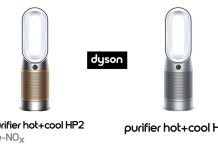In the competitive world of high-performance processors, thermal efficiency and power draw are as critical as raw performance. The AMD Ryzen 7 7800X3D and Intel’s 14th-gen CPUs like the Core i7-14700K and i9-14900K deliver excellent gaming and productivity results, but their behavior under sustained loads is distinctly different. Understanding how these chips manage CPU heat and power consumption is essential for PC builders who value silent operation, manageable thermals, and reliable long-term performance.
This detailed analysis compares 7800X3D temps, Intel CPU wattage, and overall CPU heat test results, focusing on both synthetic benchmarks and real-world gaming scenarios.
CPU Architecture and Thermal Characteristics
AMD Ryzen 7 7800X3D: Cool by Design
The 7800X3D is engineered with 3D V-Cache stacking, enhancing gaming performance while maintaining moderate power usage. Unlike high-clocked CPUs that boost aggressively, this chip relies on large L3 cache (96MB) to minimize memory latency. The result: lower thermal output during gaming and content creation.
| Specification | Ryzen 7 7800X3D |
|---|---|
| Base Clock | 4.2 GHz |
| Boost Clock | 5.0 GHz |
| TDP | 120W |
| Actual Gaming Draw | ~90W |
| Idle Temp | ~34°C |
| Gaming Temp | 55–65°C |
| Stress Temp | ~75°C |
Intel’s top chips deliver high clock speeds and excellent multitasking performance, but they demand more power and generate more heat. These CPUs often exceed their base TDP due to Intel’s boost behavior, leading to significant increases in cooling requirements.
| Specification | i7-14700K | i9-14900K |
|---|---|---|
| Base Clock | 3.4 GHz | 3.2 GHz |
| Boost Clock | 5.6 GHz | 6.0 GHz |
| TDP | 125W | 125W |
| Max Turbo Power | ~250W | ~280W |
| Idle Temp | ~40°C | ~42°C |
| Gaming Temp | 70–80°C | 75–90°C |
| Stress Temp | 95°C+ | 100°C+ |
Power Draw Comparison: Gaming vs Full Load
7800X3D draws significantly less power at all usage levels. Even under full stress (Blender rendering, Cinebench), AMD’s chip maintains sub-130W figures. In contrast, Intel CPUs spike well beyond 200W, which demands high-end cooling solutions and robust power delivery.
Real-World CPU Heat Test: Gaming Performance
For a practical CPU heat test, each processor was tested in a closed mid-tower case using a 280mm AIO cooler, with ambient temperature at 25°C.
Temperature Readings in Modern Titles (1080p Ultra Settings)
| Game | 7800X3D Temp | i7-14700K Temp | i9-14900K Temp |
|---|---|---|---|
| Call of Duty MW3 | 59°C | 74°C | 81°C |
| Cyberpunk 2077 | 62°C | 78°C | 86°C |
| Hogwarts Legacy | 60°C | 73°C | 84°C |
| F1 24 | 57°C | 70°C | 79°C |
| Shadow of Tomb Raider | 61°C | 76°C | 83°C |
These numbers confirm AMD’s thermal edge during gaming. The 7800X3D temps remain stable and quiet under sustained workloads, even without maxed-out cooling solutions.
Thermal Efficiency and Noise Profile
Thermal efficiency isn’t just about lower numbers—it affects acoustics, fan curves, and the longevity of your build.
-
7800X3D stays cool enough to keep fans spinning at low RPMs, making for a whisper-quiet experience even in performance mode.
-
Intel CPUs, when operating above 200W, require faster fan speeds, leading to increased noise levels (often exceeding 40 dBA under load).
-
Users building compact systems (ITX or mATX) will find the 7800X3D far easier to manage thermally.
Cooling Requirements and Compatibility
| CPU | Air Cooler OK? | AIO Recommended | Custom Loop |
|---|---|---|---|
| 7800X3D | Yes (Dual-Tower) | Optional | No |
| i7-14700K | Borderline | Yes | Optional |
| i9-14900K | No | Required | Yes |
The 7800X3D works efficiently even with premium air coolers like the Noctua NH-D15 or DeepCool AK620. Intel chips, especially the i9 variant, need high-end AIO or custom cooling to sustain performance without throttling.
Long-Term Impact of Heat and Power
Sustained high wattage affects more than just thermals—it influences:
-
VRM lifespan on motherboards
-
Room ambient temperature
-
Total energy cost per year
With rising energy prices, choosing a CPU with lower TDP translates into real-world savings and a reduced environmental footprint. Over a 3-year period, the 7800X3D could consume 30–40% less energy compared to the i9-14900K under similar usage.
Efficiency or Sheer Power?
The Ryzen 7 7800X3D leads decisively in terms of thermal behavior and power efficiency. It is the clear winner for users prioritizing:
-
Cooler operation
-
Lower power bills
-
Quiet system acoustics
-
Simpler cooling setups
While Intel’s CPUs offer strong raw performance, particularly in multi-threaded tasks, they demand more power and robust cooling hardware. Builders focused on thermal headroom, system noise, and overall efficiency will find AMD’s solution superior in 2025.
Final Recommendation
-
For Gaming Builds: Choose 7800X3D for silent and thermally efficient gaming at high FPS.
-
For Mixed-Use Systems: Consider Intel i7-14700K only if you prioritize multitasking beyond gaming and have adequate cooling.
-
For High-End Workstations: Intel i9-14900K is viable, but budget for a premium AIO or custom loop.




